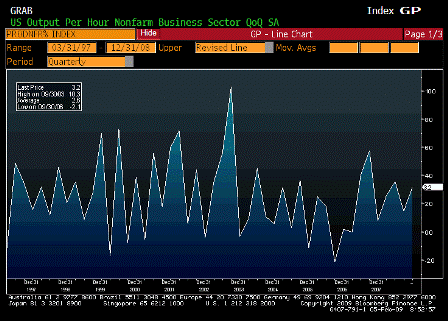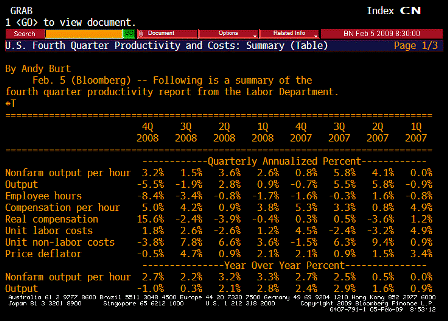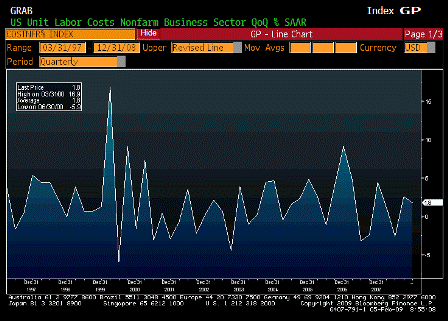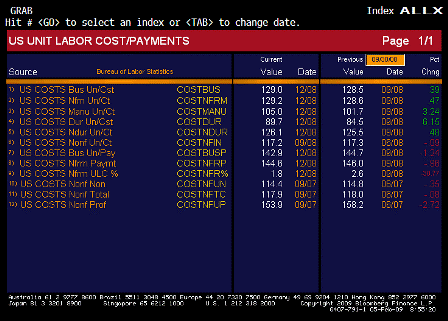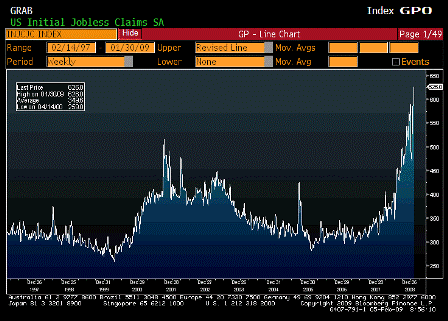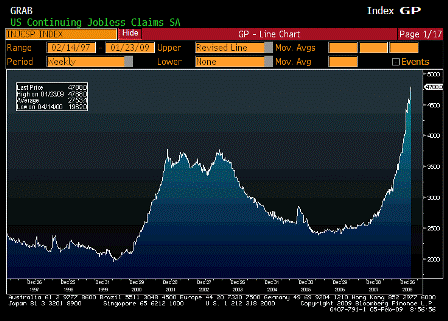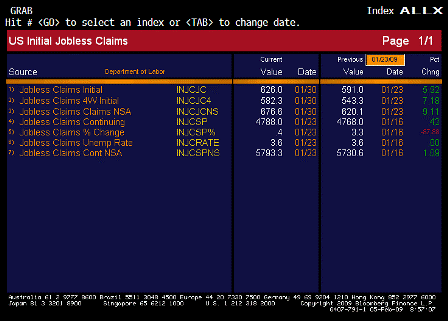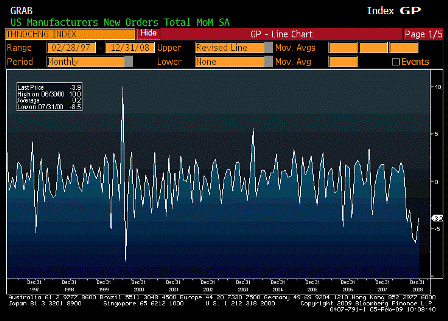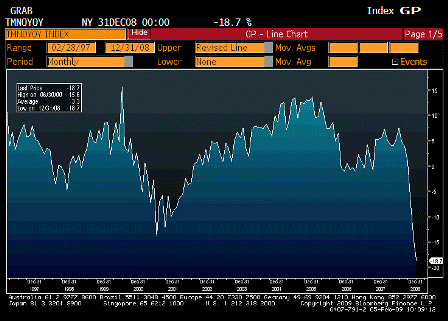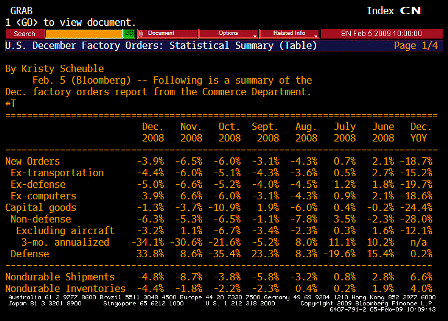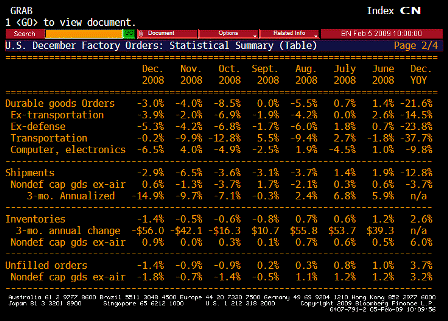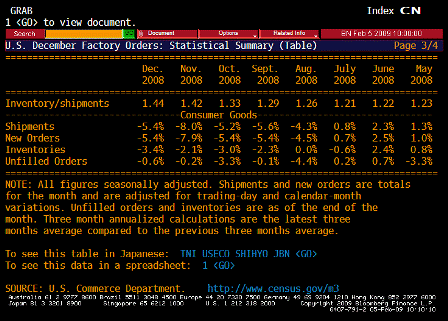[Skip to the end]
Federal Reserve Press Release
Release Date: December 16, 2008
The Federal Open Market Committee decided today to establish a target range for the federal funds rate of 0 to 1/4 percent.
Geitner ought to be able to hit that one..
Since the Committee’s last meeting, labor market conditions have deteriorated, and the available data indicate that consumer spending, business investment, and industrial production have declined. Financial markets remain quite strained and credit conditions tight. Overall, the outlook for economic activity has weakened further.
Aggregate demand continued to fall
Meanwhile, inflationary pressures have diminished appreciably. In light of the declines in the prices of energy and other commodities and the weaker prospects for economic activity, the Committee expects inflation to moderate further in coming quarters.
Inventory liquidations to continue and OPEC not expected to hike prices
The Federal Reserve will employ all available tools to promote the resumption of sustainable economic growth and to preserve price stability. In particular, the Committee anticipates that weak economic conditions are likely to warrant exceptionally low levels of the federal funds rate for some time.
Low interest rates per se are believed to promote growth and employment.
The focus of the Committee’s policy going forward will be to support the functioning of financial markets and stimulate the economy through open market operations and other measures that sustain the size of the Federal Reserve’s balance sheet at a high level.
A larger balance sheet promotes growth, employment, and marketing functioning.
As previously announced, over the next few quarters the Federal Reserve will purchase large quantities of agency debt and mortgage-backed securities to provide support to the mortgage and housing markets, and it stands ready to expand its purchases of agency debt and mortgage-backed securities as conditions warrant.
This implies the purchases have some benefit other than from keeping interest rates for these securities lower than otherwise, as it didn’t say the purpose was lowering mortgage interest rates.
The Committee is also evaluating the potential benefits of purchasing longer-term Treasury securities. Early next year, the Federal Reserve will also implement the Term Asset-Backed Securities Loan Facility to facilitate the extension of credit to households and small businesses. The Federal Reserve will continue to consider ways of using its balance sheet to further support credit markets and economic activity.
Seems they still don’t grasp that it’s about ‘price’ (interest rates) and not ‘quantity’.
Voting for the FOMC monetary policy action were: Ben S. Bernanke, Chairman; Christine M. Cumming; Elizabeth A. Duke; Richard W. Fisher; Donald L. Kohn; Randall S. Kroszner; Sandra Pianalto; Charles I. Plosser; Gary H. Stern; and Kevin M. Warsh.
In a related action, the Board of Governors unanimously approved a 75-basis-point decrease in the discount rate to 1/2 percent.
They are still keeping it higher than the Fed Funds rates and still demanding collateral.
In taking this action, the Board approved the requests submitted by the Boards of Directors of the Federal Reserve Banks of New York, Cleveland, Richmond, Atlanta, Minneapolis, and San Francisco. The Board also established interest rates on required and excess reserve balances of 1/4 percent.
No mention of the USD swap lines to foreign central bands that was last reported to be well over $600B.
Still no evidence of a working understanding of monetary operations and reserve accounting.
[top]
